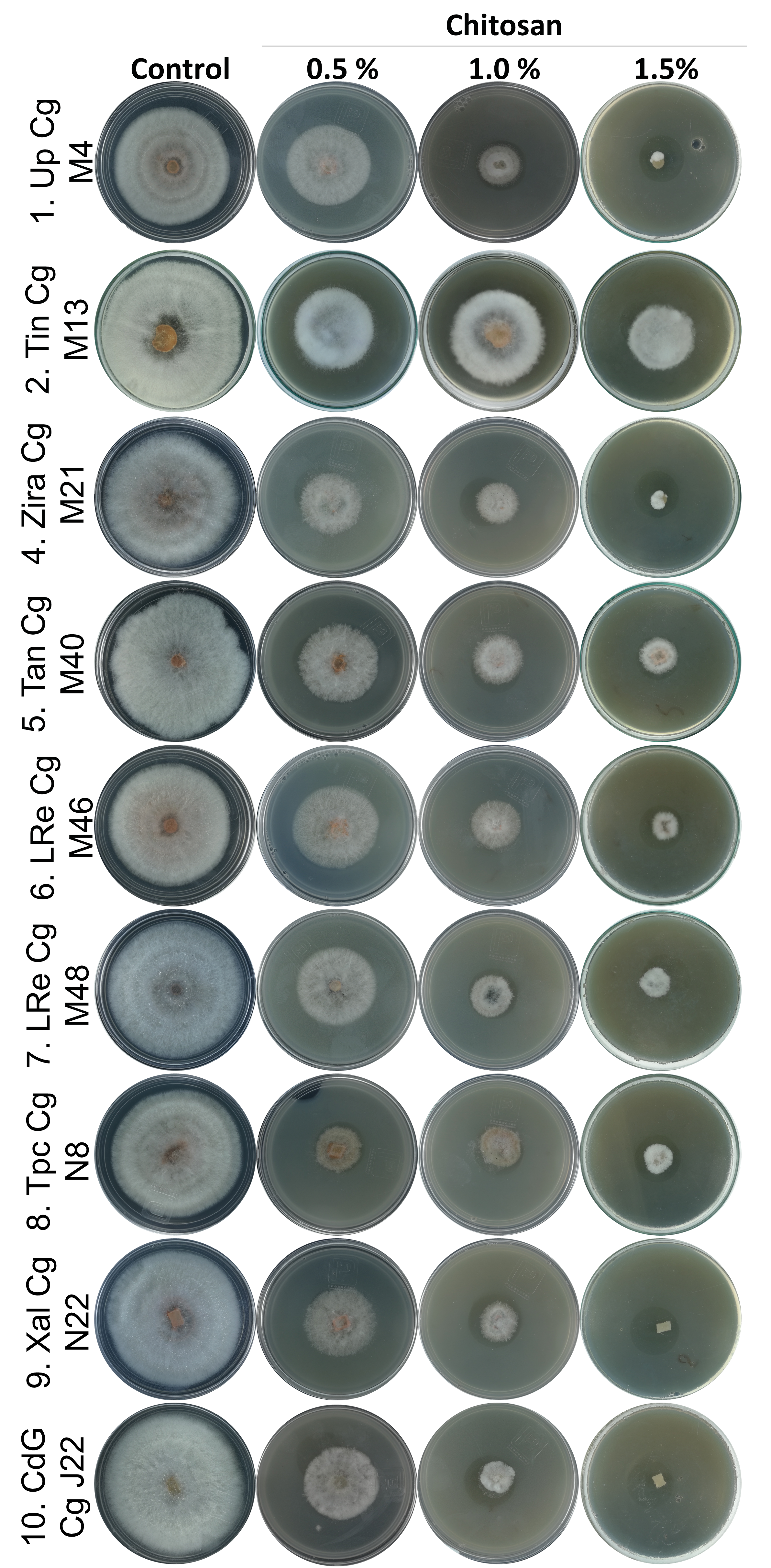 |
|
Anthracnose is the main disease causing postharvest losses in 'Hass' avocadoes. The preharvest control of anthracnose is carried out with synthetic fungicides, so its postharvest use is limited. Chitosan, a non-toxic biopolymer considered GRAS, is an alternative to synthetic fungicide. The aims of the study were to determine in vitro the antifungal effect of chitosan and evaluate the elicitor effect and shelf-life-extending of chitosan on postharvest 'Hass' avocado fruits. A commercial chitosan was used. Nine strains of C. siamense were treated with 0, 0.5, 1.0, and 1.5\% chitosan. Mycelial grown, sporulation, and germination were evaluated. Avocado fruits were also treated with the same chitosan concentration and stored at room temperature until ripening, and phenylalanine ammonia-lyase (PAL) activity was evaluated daily. Finally, avocado fruits were inoculated with three strains of C. siamense and subsequently treated with the same chitosan concentrations. Weight loss, color, and firmness were evaluated. As a result, all strains were sensitive to increasing chitosan concentration, reaching 100% inhibition of mycelial growth at 1.5% chitosan. PAL activity was higher in the pulp than in the skin. Weight loss decreased rapidly with 0 and 0.5% chitosan, whereas 1.0 and 1.5% chitosan decreased firmness loss and color change.
Keywords: Persea americana Miller, mycelial growth, anthracnose, phenylalanine ammonia-lyase, postharvest quality.
|
|
 |

